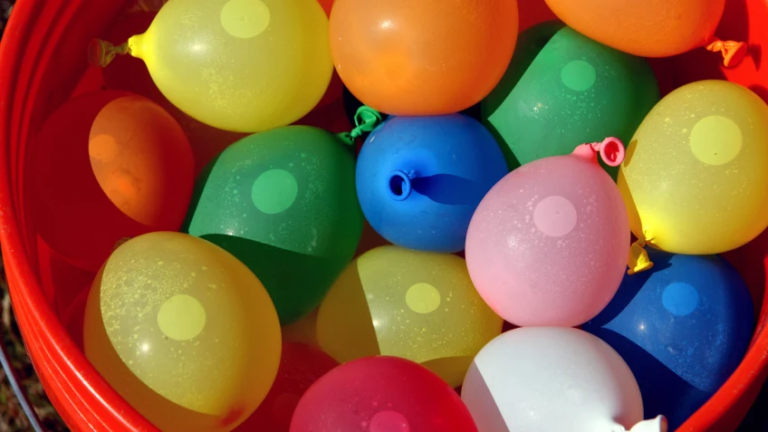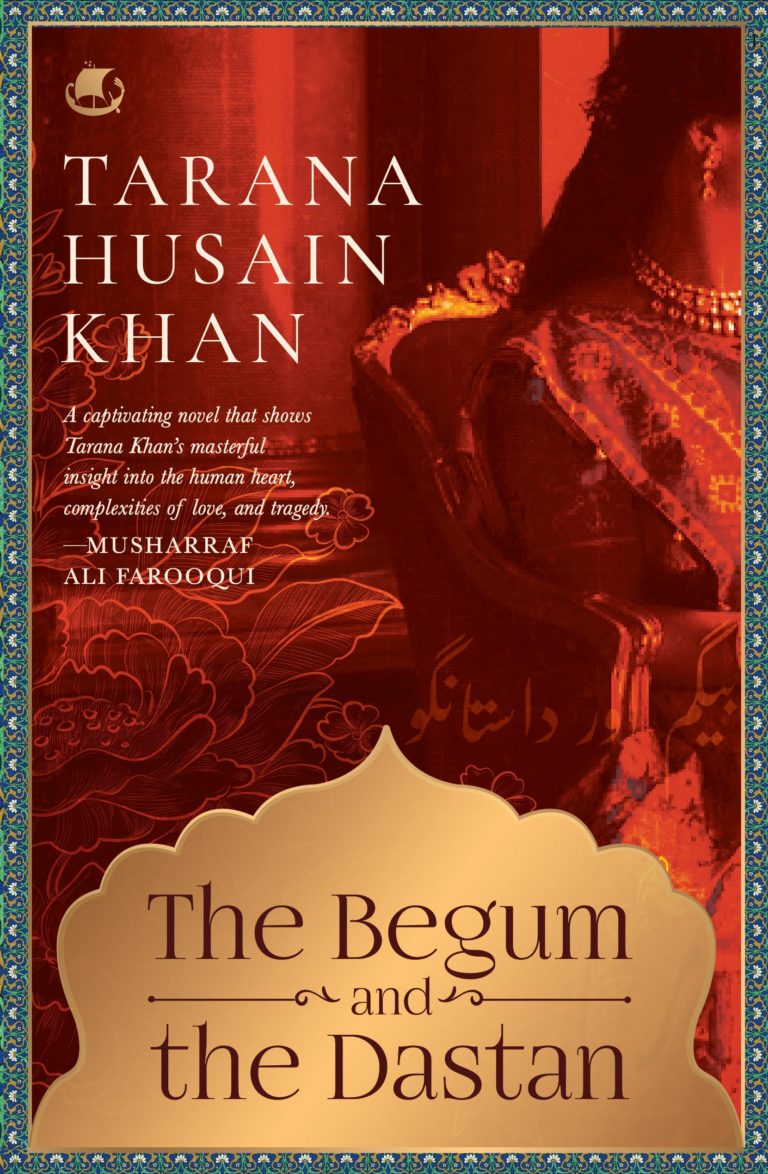HOW THE NAWAB OF RAMPUR HUMILIATED HIS PROUD BEGUM ON ‘NAUROZ’
My grandfather, Zaigham Husain, would seat me and my sister in his tiny room and talk about Moharram rituals, cry listening to marsiyas and exalt the wonderful spread of sweetmeats on Nauroz. Sitting on his prickly, wool blanket, the crying at the martyrdom of Hazrat Husain seemed unreal to us but we were caught up with fabled Nauroz dishes, colours and celebrations. Even as little girls we knew that it was impossible to celebrate Nauroz in our house because our mother is a staunch sunni Muslim and Papa had given up his shiah religious practices when he got married, much to the angst of our grandfather. But Dada gave us the alternate shiah reality that our lives could slip into, valiantly trying to bring us back to the true faith. He even gave us shiah names. Mine was Nargis and as I was born on Nauroz, it became my favourite imaginary festival which I ‘celebrated’ in the persona of the elegant Nargis, my younger sister, in her shiah identity of Shirin, assisting me in laying out the sweets and welcoming the new year.
Nauroz (lit: New Day) is celebrated on the 20th or 21st of March as the sun enters into Aries as the beginning of the Persian New Year, a traditional spring festival that got integrated in the socio-cultural milieu with religious overtones. It heralds new beginnings and spiritual regeneration with prayers said over new fruits and grains. The shiah community in Iran, Iraq, Afghanistan and Turkey celebrate it with rich symbolism of life in the form of mirror, newly sprouted wheat, candles etc. It is also celebrated by the Zorastrians all over the world as the beginning of a new year.
The Nawab of Rampur, Hamid Ali Khan, a deeply flawed, gifted and complex character, was the first Nawab to declare himself a shiah at the turn of the last century under the influence of his foster mother, Janab Aliya, who belonged to Jansath near Lucknow. Thereafter, the Nawab set himself to the task of emulating all the practices of his new faith. A glorious imambara was established inside the Rampur fort and the Nawab observed Moharram rituals to mourn the martyrdom of the grandsons of Prophet Mohammad. This adherence to forty days of mourning during and after the lunar month of Moharram is the cornerstone of faith for the shiah sect of Muslims.
Rampur was a princely state in the north of India, established by the Rohilla Pathans from Afghanistan who belonged to the sunni sect of Muslims. This change of faith by the Nawab caused a lot of consternation among the Pathan chieftains but the Nawab was all powerful and supported by the legitimacy granted by the British colonial powers. As Rampur had remained aloof during the uprising of 1857, the British had amply rewarded the Nawabs of Rampur by giving them titles and the status of a 21 gun salute- a bit lavish for a small state that Rampur had shrunk into.
After the abolition of the court of Oudh (Lucknow), post the revolt of 1857, a number of singers, dancers and poets were invited to the Rampur court and it had become a centre of fine arts with Nawab Hamid Ali Khan as a trained dhrupad singer and poet. The Nawab stunned all with the sheer grandeur of his court and tried to emulate the Lucknow culture in all things from food to entertainment with a distinct ‘Rampuri’ touch.
The nouveau shiah Nawab started celebrating the Persian new year, ‘Nauroz’ with great fanfare at the imambara. New fruits, sweetmeats and grains were kept in silver qaabs or serving dishes. At the centre of the dining table were seven grains ground and displayed in seven silver dishes. A rose floated on water in one of the silver bowls. According to an oft repeated story, the Nawab stood with the shiah maulvi and other shiah dignitaries of the court and prayed with them requesting Hazrat Ali to accept the offering and grant peace and prosperity to his domain. He then asked the gathering to leave the room and the door was locked for some time. When they re-entered the room, they found that the ground grain had marks of a hand, as if someone had picked up the flour. This signified the acceptance of the offering by Hazrat Ali himself. The eyewitness account was narrated by a gentleman and penned by his granddaughter in her memoir which is under publication.
The Nawab’s begums were ostensibly free to follow their faith but the strict court etiquettes enforced by the Nawab through his lady guard, the Daroghan, made it almost impossible for them to avoid the various rituals of the shiah faith. A few begums ‘converted’ to shiah faith to please the Nawab.
One such Begum was Munawwar Dulhan Begum, a title given to her after her practically forced marriage to the Nawab. We do not know her real name which, as her original persona, became redundant after marriage. Munawwar Begum belonged to a Pathan noble family. Her father was one of the chief critics of the Nawab’s new faith and was often reported voicing his censure indiscreetly. He looked down upon all shiahs as fabricators who mutilated the true religion followed by sunnis. Even today the Pathans believe that Nawab Hamid Ali Khan became a shiah to clothe his debauchery with the permissiveness of shiah customs.
The Nawab promptly sent a proposal to marry his daughter. When the gentleman dithered, he was faced with threats and was finally forced to bow down and accept the proposal on condition laid down by other Pathan nobles, who acted as mediators, that the Nawab would wed the girl in an honourable way and the Nikah would be performed. The Nawab, being a shiah, could also indulge in temporary marriage called mutah. The poor girl was thrust into the harem of the Nawab bearing the brunt of her father’s undiplomatic prejudice.
The Nawab kept his new begum in a separate palace mahalsara guarded by the inimitable Daroghan and a posse of eunuchs and female guards. The Begum followed her sunni faith but had to maintain an imambara room and observe the mourning rituals during Moharram. She employed some ladies of the noble Sayed descent to perform the rituals, attended the gatherings but drew a line at the violent ritual of maatam. The shiahs perform the maatam by beating their chests in grief at the martyrdom of Hazrat Husain. She was said to be arrogant and did not mix around with other begums at the various events and occasions, a trait that she inherited from her proud Pathan lineage. The Nawab often organised various festivities in the zenana or female section of the palace which was attended by his twenty-two Begums resplendent in their long farshi skirts and their royal jewels on display.
Around this time, the Nawab was told that at the court of Lucknow they played with colours to celebrate Nauroz. Nawab Hamid Ali Khan immediately ordered the preparation for a colourful Nauroz. The colour was declared by the clerics in Iran and only that colour was to be used. The venue for the playing of colours was one of the mahalsara called Shahenshah Manzil. All the begums and female relatives were instructed to wear white churidar kameez, silver pistons were made for spraying colours and a tank was filled with the prescribed colour. The Shahenshah Manzil had beautiful lawns edged with fruit trees and a large tank for watering the area.
The Nawab entered dressed in white angarkha and a coloured, gold embroidered cap called ‘Hamid cap’. He was the only male present at the celebration. A Begum from Lucknow was given the honour of squirting colour on the pristine white dress of the Nawab first. After that it was free for all and everyone rushed to fill their pistons with colour and sprayed away. Suddenly, the Nawab paused and asked, ‘Where is Munawwar Begum?’
The Daroghan salaamed and said, ‘Sarkar, she is unwell and sends her excuses.’
The Nawab understood that the haughty Begum did not want to participate in the festivities which she looked down upon as a shiah celebration. He immediately asked that the female guards escort her in his presence. The guards and maids went to call the Begum and returned empty handed saying that the Begum is resting. The enraged Nawab sent them back again to Munawwar Begum’s residence, ‘Wake her up and bring her here!’ he thundered.
All festivities had paused, the other Begums agog at the arrogance of Munawwar Begum and frozen into immobility with the Nawab’s rage. The Nawab was known to be unforgiving and vindictive in his fury.
Once again the maids came back and reported that the Begum was awake but refused to come. By now the Nawab was besides himself with anger at being defied so blatantly.
‘Bring the Begum with the bed she is lying on!’ he commanded.
The maids and the guards ran off again, tried to remonstrate with Begum Munawwar, told her about the command of the Nawab but the Begum covered herself with her sequinned coverlet and held on to the side of the bed, stubbornly refusing to comply.
The female guards were helpless and carried the recalcitrant Begum lying on her bed to Shahenshah Manzil mahalsara which was practically adjacent to her residence, and set her down on the garden right in the middle of the painted revellers. The Begum still did not get up from her bed, did not even greet the Nawab who towered near the bed.
‘Throw her in the tank along with her bed!’ shouted the Nawab and stormed out of the palace. The female guards obeyed the order and the Begum was completely immersed in the water along with her bed and bedding with the other wives looking on and no doubt, enjoying the fall of the proud Begum. She had to be fished out of the pool, drenched, humiliated, taken back to her residence dripping and outraged.
It is said that she blamed the Lucknow Begums for her humiliation and never spoke to them again. There is hardly any reference to the Begum after this incident. My guess is that she patched up with her husband. There was no other alternative. She couldn’t divorce or go back home. We do know that Begum Munawwar was childless and the Nawab gave her his third son from another Begum. The boy was brought up under her care. It is reported that the Nawab was kind and caring towards her though he detested her lofty attitude towards other begums. After his death, a number of begums went back to live with their relatives and were given pension but Munawwar Begum lived in the new palace ‘Khas Bagh’ with her step son, Nawab Raza Ali Khan who inherited the throne.
Today, Nauroz is celebrated in Rampur by the shiah Muslims in their homes, toned down drastically from the earlier pomp. It is regarded more of a womanly affair. The time and colour of the festival is decided by Iranian clerics. This year the colour declared is white so white will be an essential part of the items set out for the nazar. Some follow the system of haft-seen or seven items beginning with the sibilant letter ‘seen’. So it can include, sabzeh (green grains like wheat etc.),seer (garlic), seb (apple), sirkeh (vinegar) etc. But for convenience people stick to sweets and new fruit of the season symbolizing spring. The dining table is laid out with new fruit, sweetmeats and a rose in a bowl of water. It is said that if the rose is put in the water at the exact time of equinox or the time that the sun enters into Aries, it will start floating in a circular path. The rose water is then sprinkled in all the corners of the house and on all the family members as a blessing. Prayers are recited by the eldest person of the house. Some people also sing songs. Everyone partakes of the special dishes and wish each other with ‘sal mubarak’-happy new year.
Tarana Khan




Greetings mam,
I read your article regarding ‘Nauroz’ and found it very beautifully written & interesting. Since I am a regular visitor to all these mentioned places, all the scenes were just flowing right in front of my eyes while reading this article.
Regarding the faith of Nawab Hamid Ali Khan, inter/intra faith conversions in India are permissible & very common due to its humongous religious diversity and average exposure an Indian gets towards the practices & ideas of different faiths. But God has provided us sufficient critical thinking ability to distinguish between the right & wrong.
It depends on us that at what rate we are processing the information inside our brain or may be we are restrained from doing so due to peer pressure.
“Hur Jaisa Koi Lal Zamane Mein Mila,
Aashoor Ko Ahmed Ke Yagano Mein Mila,
Nadaano Ki Sohbat Se Nikalkar Ae ‘Saif’,
Daana Tha Joh Tasbeeh Ke Dano Mein Mila.”
Hur is the biggest example of this. As his eye opener were the cries of “Alatash(Thirst)” from the tents of Imam Husain(a.s) on Shabe Ashoor.
Just one night before “Ashura” he abandoned his extremist faith, rank, power in Yazeed’s (l.a) army &
switched his loyalty at the cost of his life, family & wealth in order to achieve martyrdom.
The Kings, Rajas, Badshahs & Nawabs do not need any justification or reason to justify their debauchery.
Alcoholic Mughal emperors like Jahangir, Shah Jahan never converted to Shia faith in order to justify their association with their numerous wives & concubines.
It is just another one of the baseless accusations by other communities to demean Shiaism as they have done right from the beginning in the form of accusations like “Spitting in the food before serving it, Shias have Quran of 32 chapters(Paras) e.t.c”
And regarding the concept of Mutah, it was legal in the period of Prophet of Islam & even in the period of 1st Caliph Abu-Bakr from the references of Sunni sources(Sahih Bukhari). It was categorized as illegal in the period of 2nd Caliph Umar, obviously who had no right to perform alteration in the Shariah of Prophet of Islam post his death.
My opinion on Nawab Hamid Ali Khan’s conversion may be bizarre. But I thought very much about it and came to this conclusion after taking inspiration from the speech of Allama Zameer Akhtar Naqvi (a famous religious speaker, poet) in the ‘Ashrae Majalis’ (series of lectures) titled as “Siasate Zamana & Hikmate Deen”
God was, is and forever will be ready to turn down any foul play of ‘Politics’ (Siasat) from his enemy side and replies with his play of (Hikmat). He, the almighty always have a answer ready for his enemies well before the play of politics from their side.
Yazid (l.a)the enemy of God, post the tragedy Karbala was haughty that after slaying Husain(a.s) and his family no one could ever challenge his power forever and the authority to rule would lie in his generation forever.
& Guess what God has kept ready for him unboxed?
His son Muawiyah II kicked on his father’s throne & denounced the treacherous activities of his father & forefathers towards ‘Alids’
Firoun(l.a) (Pharaoh) who claimed to be God himself, never knew that the true almighty God will harbor his messenger Moosa(A.S) in his palace only (Qasre firoun) and there too his wife ‘Asiya’ will nurture the child herself.
Here in the case of Nawab Rampur, Nawab Kalbe Ali Khan did a big mistake…. His hatred towards Shias was no doubt open & known to all. But the mistake he did was making Imam Husayn(a.s) his enemy…
On the onset of Muharram,
He ordered to write a “Misra” in big alphabets on the main entrance of his castle-
“Dekha Hai Chand Mene Muharram Mein Eid Ka…..”
So that no Shia in Rampur could ever dare to mark the mourning of Muharram in Rampur.
The next day a cook in his service originally from the court of Lucknow before leaving Rampur handed over a closed parchment in the name of Nawab to be passed over to the Nawab during his darbar…
The Nawab ordered it to be read loudly as it was the custom during those days-
The servant of the Nawab obeying the order of his highness, read it-
“Dekha Hai Chand Mene Muharram Mein Eid Ka,
.
.
.
Nawab Rampur Hai Nutfa Yazid Ka….”
The courtiers were laughing (obviously in their minds) as the shamed Nawab was raging in fury on his thrown. The enemy of Husayn(a.s) has got his first dose…(Maybe God had said)
This was the beginning of another chain of events which ultimately lead to the birth of first fully fledged Shia Nawab of Rampur Nawab Hamid Ali Khan…that too in the lineage of Nawab Kalbe Ali Khan who hated Shiaism and Azadari of Imam Husain(a.s)…
At present, the Azadari of Imam Husain(a.s) in Rampur is upto such extent that ‘Alam,Patkas & Zari’ worth Crores of rupees are present today in numerous Imambaras built by Hamid Ali Khan & his future generations..
Concluding the speech Allama Sb said-
“Parwardigare Alam Ki Ek Hikmat Zamane Ki Das Siasato Ke Upar Bhaari Hai…Isiliye Dushmane Imamat Husain(a.s) Ki Himayat Mein Kabhi Bhi Zabaan Na Kholiega…Pta Nhi Kab Khuda Apko Ya Apki Nasl Ko Hi Shia Bana Dei….”
-*-*-*-*-*-
Thank you sir for your appreciation and for this very informative writeup. The shiah sunni question was of course integral to the politics of the region. When I wrote about mutah,I quoted the general opinion of Rampur Pathans. Though I feel that the earlier Nawabs were partial to the shiah faith and the Rampur durbar underwent cultural transformation under the influence of Lucknow Begums. It is an interesting study.
very interesting . secrets of the ‘mahals’ or inner courtyards make interesting read. Perhaps you can add pictures of the nawab and the Palace as reference to context?
An abosolute delight . Very well written and narrated in a simple , sweet language. It holds the readers interest where you don’t feel like leaving the article till it finishes.